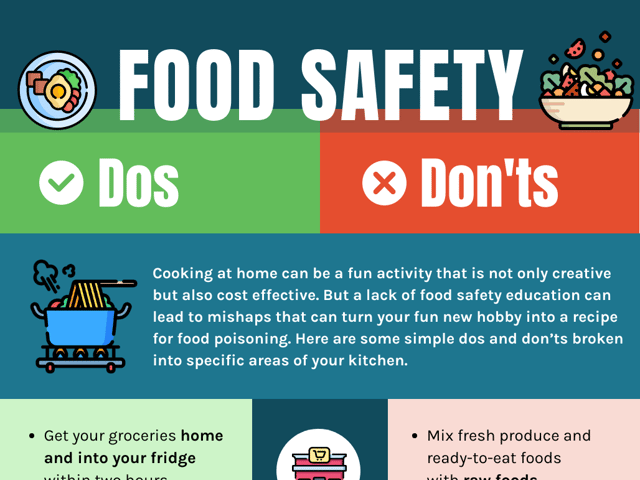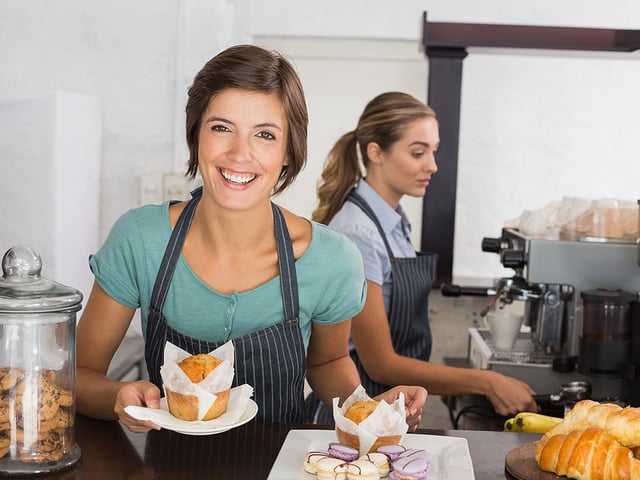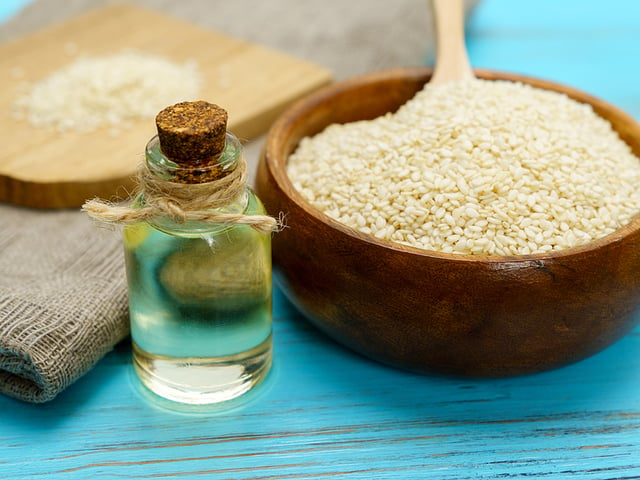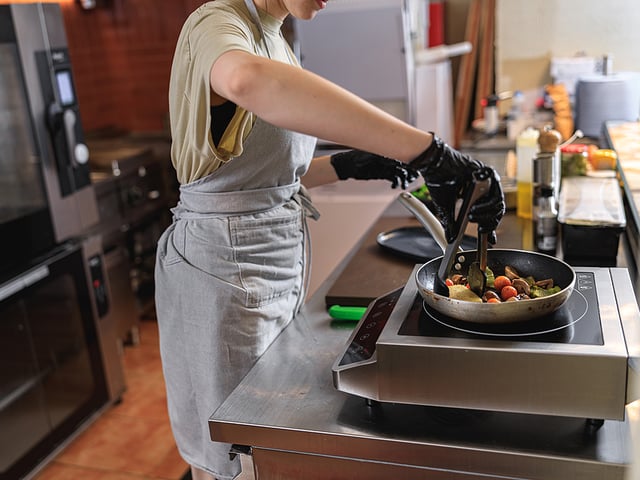
Food Safety Dos and Don’ts
Cooking at home can be a fun activity that is not only creative but also cost effective. But a lack of food safety education can lead to mishaps that can turn your fun new hobby into a recipe for food poisoning. Here are some simple dos and don’ts broken into specific areas of your kitchen.
From Store to Home
Remember, food safety starts at the grocery store, so be careful.
Do:
- Get your groceries home and into your fridge within two hours
- Make sure your refrigerator is at least as cold as 40 degrees Fahrenheit inside
Don’t:
- Mix fresh produce and ready-to-eat foods with raw foods
At the Sink:
Do:
- Rinse or soak fresh produce to clear away dirt and debris
- Thaw frozen items under cold running water
- Sanitize your sink after use
- Wash your hands with soapy water for 20 seconds
Don’t:
- Rinse poultry or meat
- Leave frozen items on the counter to thaw
- Just rinse the sink with water thinking that will clean it
- Leave soapy residue on washed dishes or utensils
In the Refrigerator
Do:
- Store ready-to-eat and fresh foods away from raw foods
- Keep the refrigerator at 40 degrees Fahrenheit or below
- Store refrigerated groceries within two hours
- Store foods in leakproof containers to keep your shelves clean
- Allow hot foods to cool before refrigerating them
Don’t:
- Store ready-to-eat and fresh foods under raw foods
- Leave the refrigerator door open for too long or the temperature inside will rise
- Overcrowd refrigerator shelves to prevent the cold air from circulating
- Neglect spills and risk your shelves becoming contaminated
- Cover or refrigerate large containers of hot food (can lead to bacterial growth)
On the Counter
Do:
- Clean the counter with soap and water after each use
- Prepare fresh produce or ready-to-eat foods separate from raw foods
- Keep an uncluttered prep area
Don’t:
- Use the surface for food prep until it has air dried
- Use the same tools or equipment to prepare raw meats, poultry, or seafood and then fresh produce or ready-to-eat foods (which is known as cross-contamination)
- Just wipe it down with water—use soap and water
- Remove more food from refrigeration than you can prepare at one time
Around the Stove, Oven, or Microwave
Do:
- Use the oven set to above 140 degrees Fahrenheit as a warming drawer for cooked hot food
- Use a microwave to thaw or reheat foods
- Invest in a thermometer to protect against temperature abuse
- Cook foods to their proper internal temperature
Basic Temperature Guidelines
These foods are fully cooked and safe to eat at these temperatures:
- Poultry—165 degrees Fahrenheit
- Ground meats—155 degrees Fahrenheit for 17 seconds
- Fish and seafood—145 degrees Fahrenheit for 15 seconds
- Chops, roasts, and steaks of beef, pork and/or lamb—145 degrees Fahrenheit for 4 minutes for roasts and 15 seconds for chops and steaks
Don’t:
- Just guess when poultry or meat is cooked enough
- Serve food that’s been sitting out at room temperature too long (which is over four hours)
- Serve or eat raw, undercooked, or unheated items
Understanding how each area of your kitchen comes with its own food safety rules can help keep cooking at home a fun and safe activity for the entire family.

Keep Reading

ServSafe Food and Alcohol Safety Exams Blog
How Long Does ServSafe Certification Last?
The ServSafe certification is a critical credential for professionals i…

ServSafe Food and Alcohol Safety Exams Blog
The Big Eight Food Allergens are Now the Big Nine
An allergen is typically a harmless protein that, for some, the immune …

ServSafe Food and Alcohol Safety Exams Blog
ServSafe Food Handler vs. ServSafe Manager: Which Course is Right for You?
The food service industry requires stringent adherence to safety and hy…